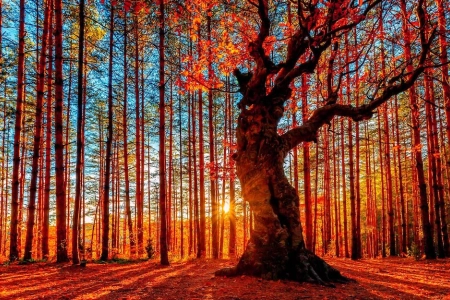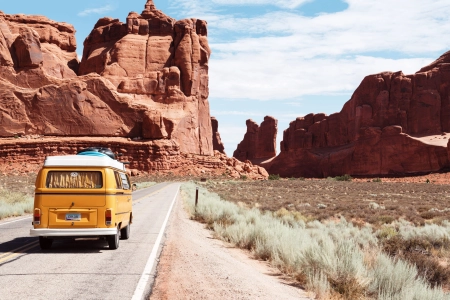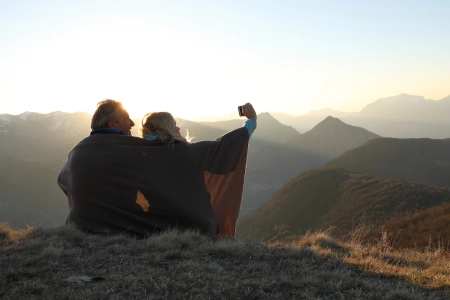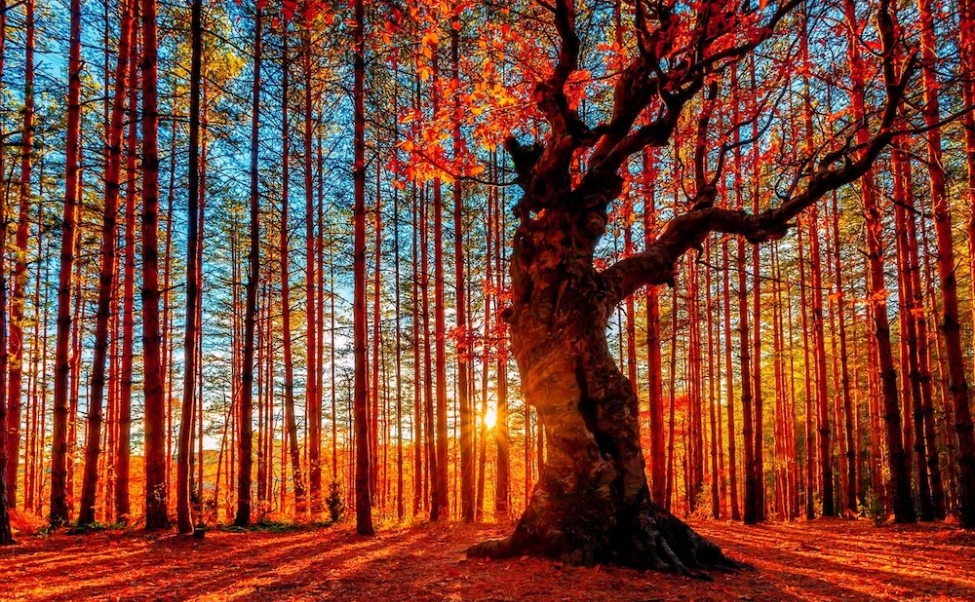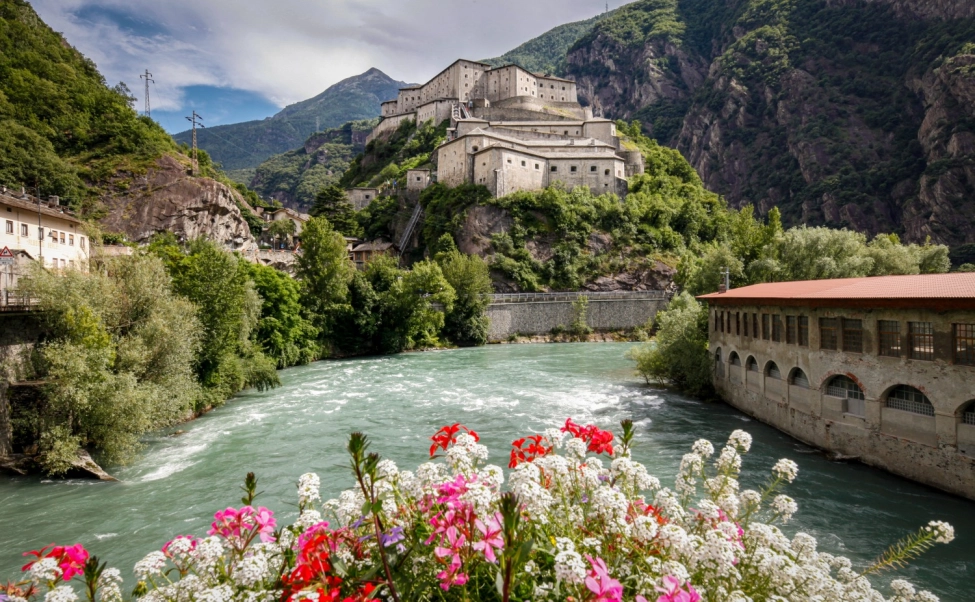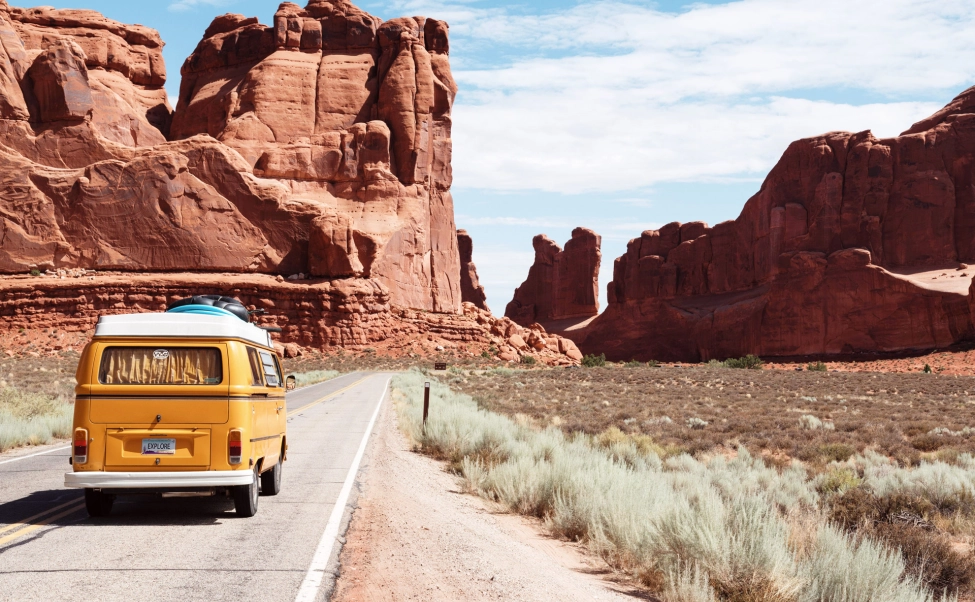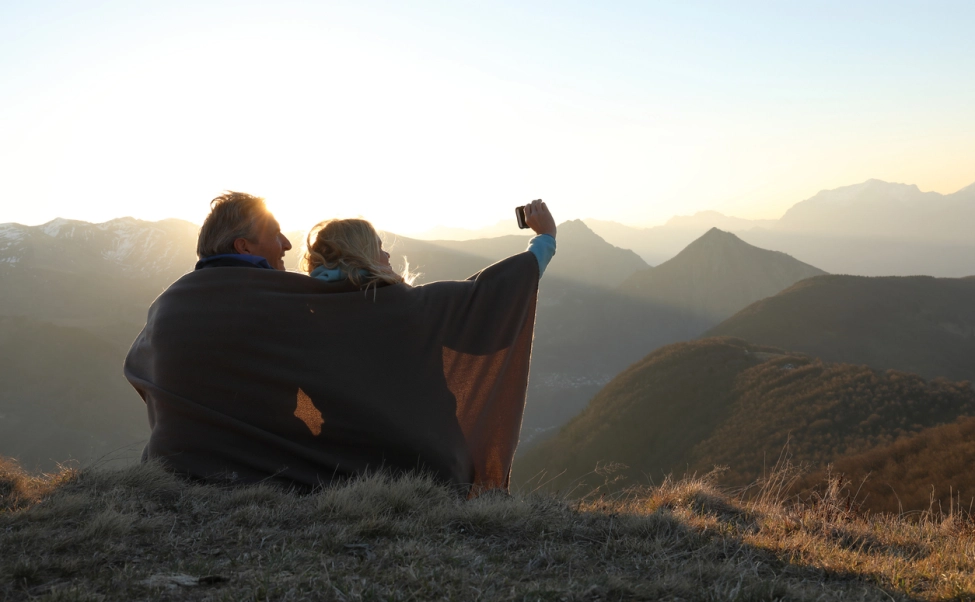- Details
- Written by: Amy Marwick
Scotland’s wilderness offers the enthusiastic walker an endless supply of terrain to explore from high mountains to rugged coastlines, to temperate rainforests, remote glens, and ancient forests – just don’t forget your waterproof jacket!
Thanks to Scotland’s fast changing weather however, you’re just as likely to enjoy some dry spells and amazing views whenever you decide to visit.
Scotland has two National Parks; the Cairngorm National Park (the largest in the UK and home to four of the five highest mountains in the UK), and Loch Lomond and the Trossachs (Scotland’s first national park), both of which are covered in this guide. However, Scotland’s wilderness extends far beyond the boundaries of these parks, with an extensive network of trails to explore, wildlife to see, and summits to climb on your next walking trip.
Why Choose Scotland for Your Walking Holiday?

If you’re looking for untamed beauty and real adventure, Scotland’s backcountry is the place to be. Besides the awesome terrain and trails, Scotland’s land has a rich and varied history with fascinating folklore and culture to discover. Just make sure you’ve got all the right gear and an open mind when it comes to weather.
Scotland's wilderness is a treasure trove for walkers.
The sheer space, diverse terrain and spectacular scenery in Scotland provide a backdrop for unforgettable walking holidays. Wildlife enthusiasts will be thrilled by the chance to spot deer, otters, beavers, eagles, and even the Scottish wildcat (and mysterious wild Haggis). Our “right to roam” policy, enshrined in the Land Reform (Scotland) Act 2003, allows everyone to cross any land for recreational purposes (with some restrictions – check before you go). This means that you can wild camp and explore freely, truly adding to that sense of adventure (just make sure you adhere to the Scottish Access Outdoor Code.
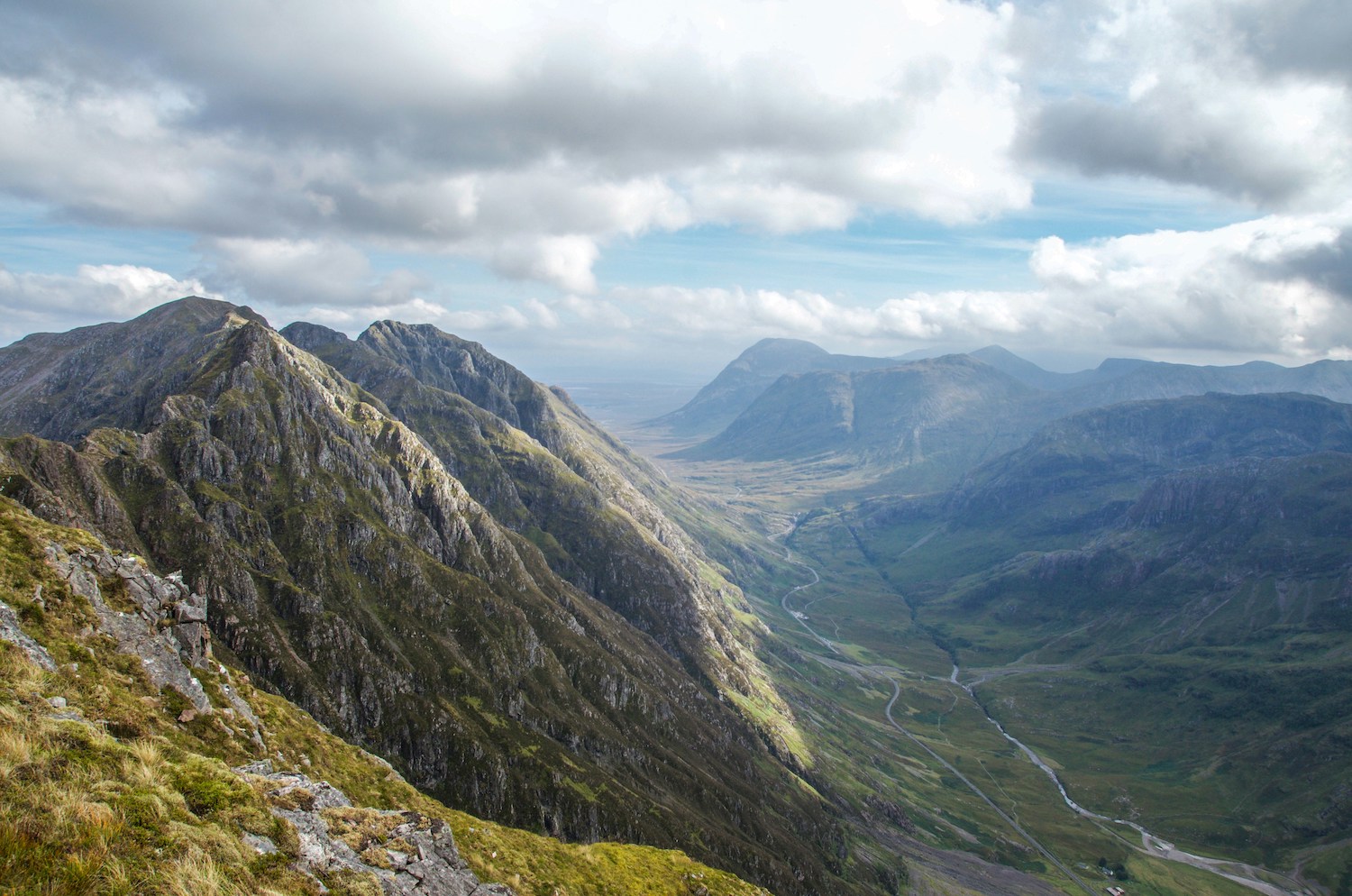
Scotland’s summits rival any mountain range in the world.
Scotland's highest mountains, peaks over 3,000 feet, are known as “Munros”. There are 282 Munros in the Scottish Highlands, spread out over Grampian Mountains, the Northwest Highlands, and the islands off the west coast. While “Munro Bagging” (ticking off all 282 summits) is a popular past time with mountain hikers worldwide, summiting a few of them, or simply strolling amongst their towering peaks and hulking crags, is a great goal for any walking holiday in Scotland. Varying in difficulty, these mountains offer everything from challenging ridge scrambles to cruisy plateau walks, each with magnificent views (if you time it right), and there are many options to link several summits in a single push.
Where are the Best Walking Holidays in Scotland?
This entirely depends on what kind of walker you are. Are you keen to clock some miles and vertical meters? Or are you ready to slow down the pace, enjoy the views and keep an eye open for wildlife? While we’ve covered five of our favourite areas in this guide, there are countless other areas in Scotland to explore from the Scottish Borders to the Outer Hebrides to the Shetland Isles. And don’t forget Scotland’s top four long-distance trails (the West Highland Way, Great Glen Way, Southern Upland Way, and Speyside Way). These stunning routes can be explored at your own pace and as such popular itineraries, there are excellent resources available to help you plan self guided walking holidays on them. But lets get on to our favourite walking holidays in Scotland.
Walking holidays in the Cairngorms: Exploring the UK’s largest National Park
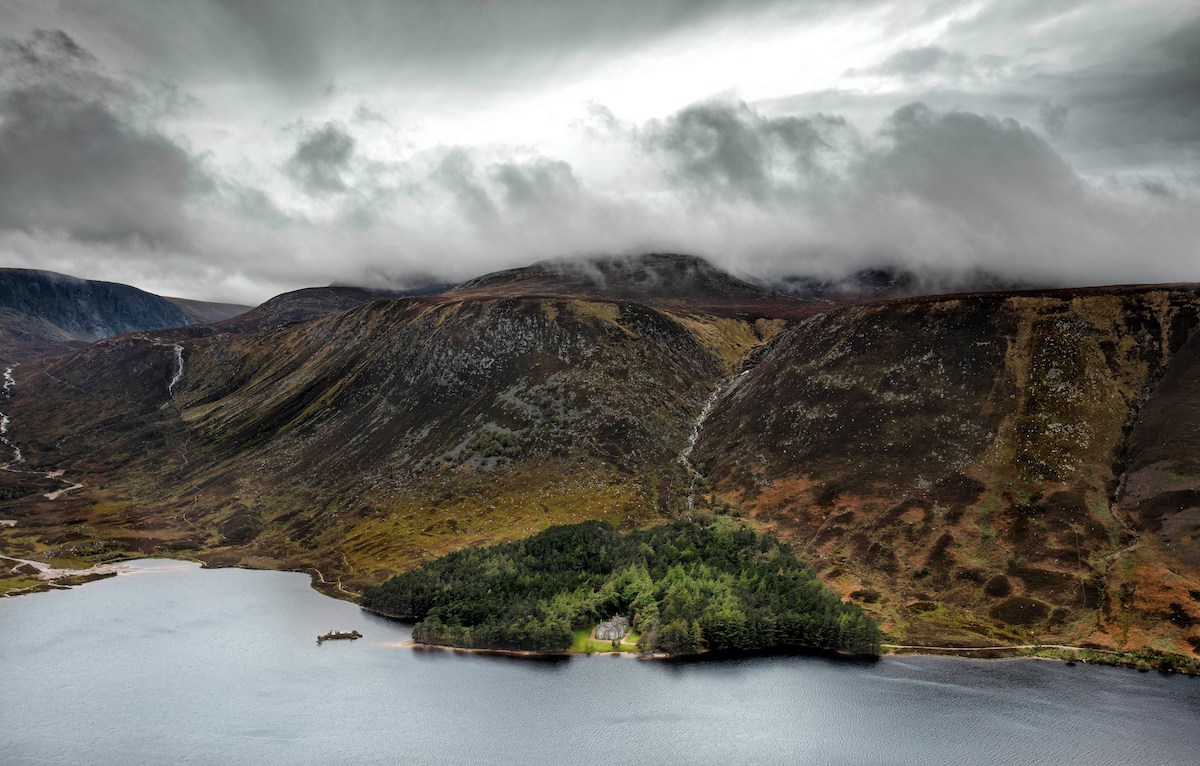
The Cairngorm National Park is a haven for walkers. The mountains here are large and looming, with deep valleys, rolling summits, and sheer north faces where climbers from all over the globe come to test their skills. For walkers, there are trails for all levels at any distance.
Head for Glen Feshie or Glenmore and slow down amongst the last remnants of the ancient Caledonian Forest. Home to whispering Scots pines, that at one point would have covered much of the Highlands, and some of the rarest wildlife in the UK, such as red squirrels, ospreys, and the elusive capercaillie.
For those who seek a challenge, many of park’s summits are doable in a day, so long as you have basic equipment and navigation experience. The paths are exceptionally well maintained and once you get high enough, you can tick off several Munros without losing too much height.
Insider tips for a walking holiday in the Cairngorms:
• The Cairngorm Mountain ski area car park sits at 600m, making it an excellent springboard for accessing the peaks beyond, whether you take a tour around the Northern Corries or commit to reaching Ben Macdui (the second highest mountain in Britain).
• Weather on the Cairngorm plateau is changeable (at best), be prepared for all eventualities and if you are at all unsure, hire a local guide to help you navigate walking this wild terrain. Check out the Mountain Weather Information Service for detailed forecasts.
• There are 14 mountain bothies inside the National Park which make for great overnight stop offs for hikers (note that these simple cottage-like buildings are a far cry from an Alpine hut with few or no facilities, however their sturdy stone walls can be a welcome refuge from a Highland storm).
• You can start the Speyside Way walk at the foot of the Cairngorms in Aviemore and follow the well-marked, undulating walking trail for 65 miles all the way to Buckie on the shore of the Moray Firth.
• The Speyside area is world famous for whisky (and increasingly for gin), don’t forget to make a stop at one of the six distilleries within the National Park when you’re ready to rest weary feet.
Walking holidays in Loch Lomond and the Trossachs National Park: Scenic Lochside Walks, Mountain Hikes and Skinny Dipping
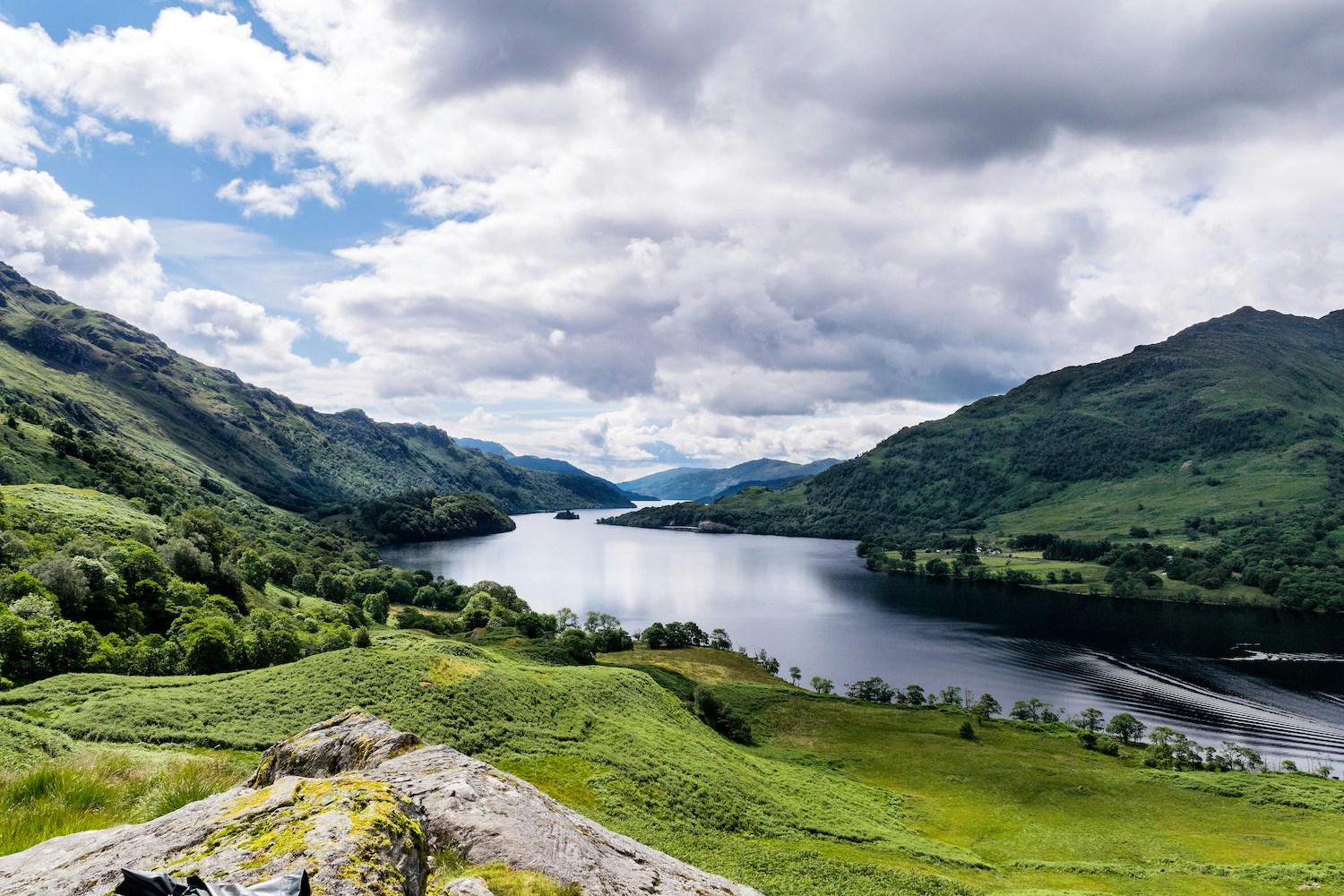
Loch Lomond and the Trossachs National Park is another prime destination for walking holidays in Scotland. While the Cairngorms is by far the more mountainous and rugged park, the Trossachs is the gateway to the Scottish Highlands and is still home to 21 Munros, as well 22 deep blue lochs fringed by lush forests.
Loch Lomond itself is the UK’s largest inland stretch of water and sits just 45 minutes north of Glasgow. At such proximity to Scotland’s biggest city, the shores of Loch Lomond can become hideously busy at holiday times and weekends. Follow one of the walking trails for just a kilometre or so into the foothills however, and you’ll be greeted by a sudden calm.
Walkers can jump onto the famous West Highland Way, which passes through the park, or take on the challenge of climbing Ben Lomond (Scotland’s most climbed Munro) for spectacular views of Loch Lomond and the surrounding area. The Trossachs offer gentler walks with equally impressive scenery, making it a perfect spot for walkers of all abilities.
Insider tips for a walking holiday in the Trossachs:
• The Trossachs have long been inspiration for artists and poets and now there is an Art & Literature Trail along the shores of Loch Katrine – well worth a stroll if you’re in need of inspiration.
• The West Highland Way was the first trail of its kind to open in Scotland. Meandering through much of the park, its 154km are a pilgrimage for walkers around the globe – a great walk for solo travellers who are keen to meet other doing the same thing.
• Don’t forget to pack your swimmers (or not) – many of the loch shores are dotted with small, almost private, sandy beaches, perfect for cooling off after a hot summer hike.
Walking holidays on the Kintyre Peninsula: Island Hopping, Ancient Ruins, and Rainforest Trails
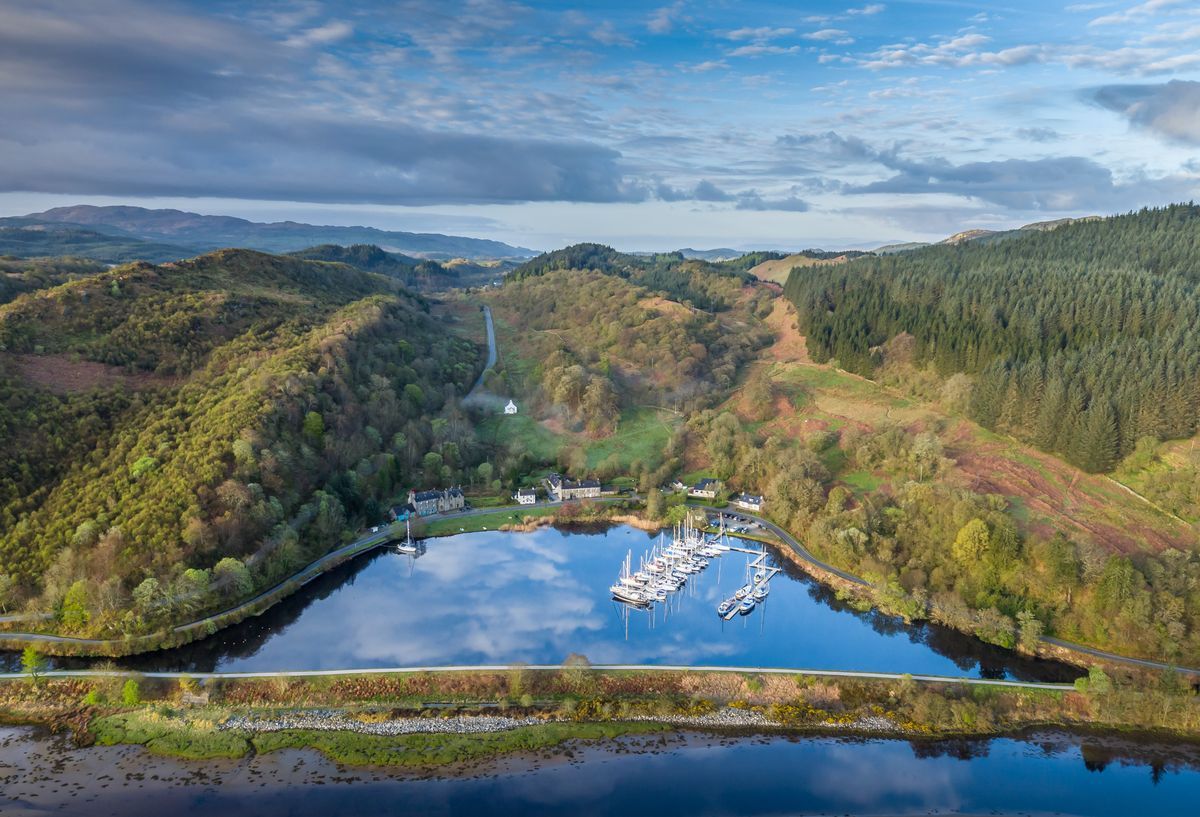
On the southernmost tip of Argyll in the southwest of Scotland, the 45-mile-long Kintyre peninsula and its surrounding islands provide a unique walking experience. Perhaps best known these days thanks to Paul McCartney’s tribute song, “Mull of Kintyre”, the peninsula is enhanced by its remote location which keeps the crowds away. This special corner of Scotland features rugged coastlines, hilly terrain and dense foliage. Steeped in history, the area is dotted with Neolithic historic sites and storied crumbling castles, once home to Scottish clans or the site of Viking invasions.
Much of the woodland is classed as rare Temperate Atlantic Rainforest thanks to the mild climate and humid, damp conditions – but don’t be deterred! This makes for a beautiful, deep green landscape with a different feel to much of the West Highlands and a vast array of flora. Notable walking routes include the Kintyre Way, which spans 100 miles from Tarbert to Machrihanish, and the scenic coastal path from Campbeltown to Southend.
Insider tips for a walking holiday on the Kintyre Peninsula:
• For the historians amongst you… Take a walk around Kilmartin Glen to find ancient standing stone circles and burial cairns.
• The Crinan Canal, known as "Britain's most beautiful shortcut," provides a picturesque backdrop for leisurely walks along its towpaths.
• The nearby islands of Islay and Jura to the west, and Arran to the east, are just a short ferry journey away. They offer spectacular mountain hikes and make great extra stops to round off your Scottish walking holiday.
Walking holidays in Glencoe: Mountain Turrets and Steep Ascents
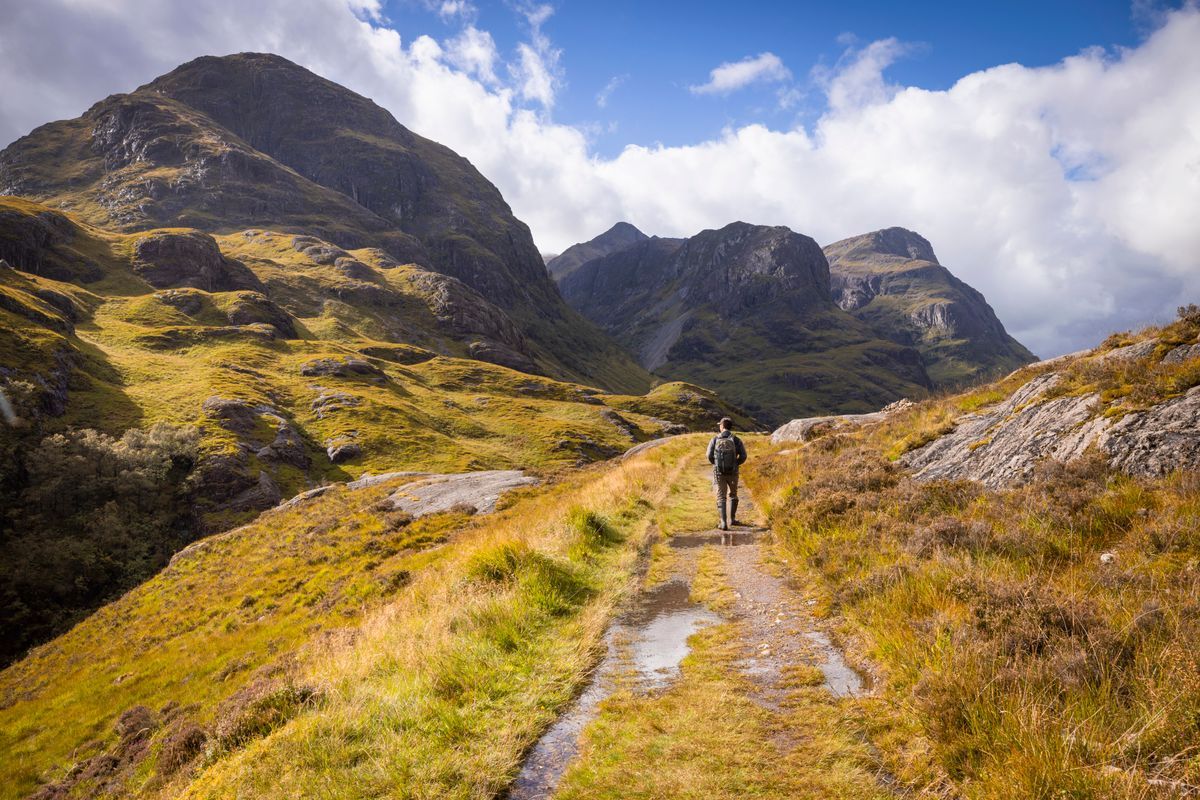
Glencoe is renowned for its towering summits and dramatic views. This iconic glen offers some of the most challenging and rewarding walks in Scotland. The jagged peaks, deep valleys, and sea lochs beyond provide a stunning backdrop for hiking, reminiscent of Norwegian fjords.
Not for the faint hearted, much of the best walking in Glencoe starts with steep ascents straight from the car park.
If you’re happy with sustained climbs, narrow ridgelines, and scrambling terrain, then look no further, Glencoe offers these in abundance.
My favourite walking route has to be the loop around Bidean nam Bean, via Coire nan Lochan on the way up, and The Lost Valley on the way back down. Or for a challenging walk and airy ridgeline adventure, why not tackle the turrets and spines of the Aonach Eagach ridge.
Insider tips for walking holidays in Glencoe:
• Don’t leave Glencoe without a visit to the Clachaig Inn back bar for some well-deserved scran, and, if you’re lucky, live music, and a raucous party.
• If you’re in need of a cooling dip, there is a lagoon-like rock pool on the river Coe, tucked away behind Glencoe Village, complete with rock jumps.
Walking holidays in Assynt: Wilderness, Wildlife, and Serious Sunsets

Head further still up the west coast of Scotland, beyond Ullapool, and you will eventually hit Assynt. Remote, sparsely populated, and wild, it’s the perfect walking holiday destination if you’re in search of peace and isolation. Ridge after ridge of rocky mountains rise sharply from moorland carpeted with purple heather, ferns, and inhabited only by wildlife. An excellent spot for animal sightings and birdwatchers, Assynt offers one of your best chances of spotting Golden eagles soaring overhead and capering otters on the loch shores.
The area is small enough that you could easily tick off walking its main summits in a week, or simply enjoy exploring the caves, waterfalls, white sand beaches, and loch spattered moorland.
Insider tips for walking holidays in Assynt, North West Highlands:
• Mountain trails in this area are much less frequented (or completely non-existent) so be prepared to negotiate rough, rocky and sometimes boggy terrain.
• Get yourself to the summit of Cul Mor or Canisp for sunset and expect some seriously stunning views out towards the sea and of the spectacular turrets of Stac Pollaidh to the south.
• A visit to Assynt would not be complete without walking to its most western corner for views of the Old Man of Stoer, an impressive sea stack, and the best place for spotting coastal wildlife, whales, and dolphins.
• For those in search of a real walking adventure, why not try a hike, camp, and kayak combo? Try paddling from Elphin across Loch Veyatie, and onto Fionn Loch, before summiting Suilven. And for a further extension, portage your boat over to Loch Sionascaig, to follow up with topping out on Cul Mor and Stac Pollaidh.
Types of Walking Holidays in Scotland
Self-Guided Walking Holidays: Explore at Your Own Pace
Scotland has a vast network of walking trails that are marked and maintained, making it easy to plan your own adventure. Resources like Walk Highlands provide extremely detailed information on routes, maps, and accommodation options and apps like Outdoor Active and All Trails rate, review and map out hikes suggested by others – and for a truly off-grid experience along the way, our guide to the best bothies in Scotland is well worth a read.

Guided Walking Holidays: Guided Tours and Mountain Guides
For those who prefer a more structured experience, guided walking holidays in Scotland offer the benefit of expert guides, local knowledge, and very little planning on your part. Companies like Wilderness Scotland offer group walking holidays that include everything from handpicked accommodation, luggage transfer, and meals, to a walking tour through some of the most beautiful and remote parts of the country. Alternatively, you could hire a mountain guide for a couple of days in the area you’d like to explore, and then get their advice on walking routes that would be suitable for you to tackle alone.
Planning Your Walking Holiday in Scotland
Choosing the Right Time to Visit
Scotland's weather is notoriously unpredictable, so choosing the right time to visit for a walking trip can be tricky. May and June are my favourite months to explore Scotland. The midges aren’t quite in full flow (especially on the west coast), the weather is generally more stable, and long stretches of hot (for Scotland) sunny weather are not unheard of (especially in a La Nina year).
July and August can be a stonking hit or a glaring miss, but if you’ve got the right gear, you’ll enjoy walking in Scotland no matter what (whilst wondering what everyone else is complaining about). September and October can be stormy or sunny, but at least a little quieter than the summer months with fewer midges and a beautiful change in the landscape. Winter walks are possible but require more preparation and experience due to significantly harsher conditions.

Packing Essentials
When packing for a walking holiday in Scotland, it's essential to be prepared for all weather conditions, but perhaps most importantly – don’t forget your waterproofs.
• If you’re walking in the summer you might just need a lightweight waterproof jacket, but we’d recommend considering packing a robust waterproof jacket too, just in case the weather takes a turn, as well as waterproof trousers.
• A midgey head net is essential (NB These have much finer mesh than mosquito nets!) and some midge spray, especially if you're doing any camping.
• Walking boots or approach shoes.
• A lightweight insulated jacket is useful for throwing on for chilly starts or on the summit.
• Hat and gloves - even in summer the temperatures can vary wildly from the valley floor to the Munro tops.
• Walking poles are highly recommend, particularly if you plan to tackle the Munros.
• A flask for a hot drink can be a welcome treat on a blustery summit.



